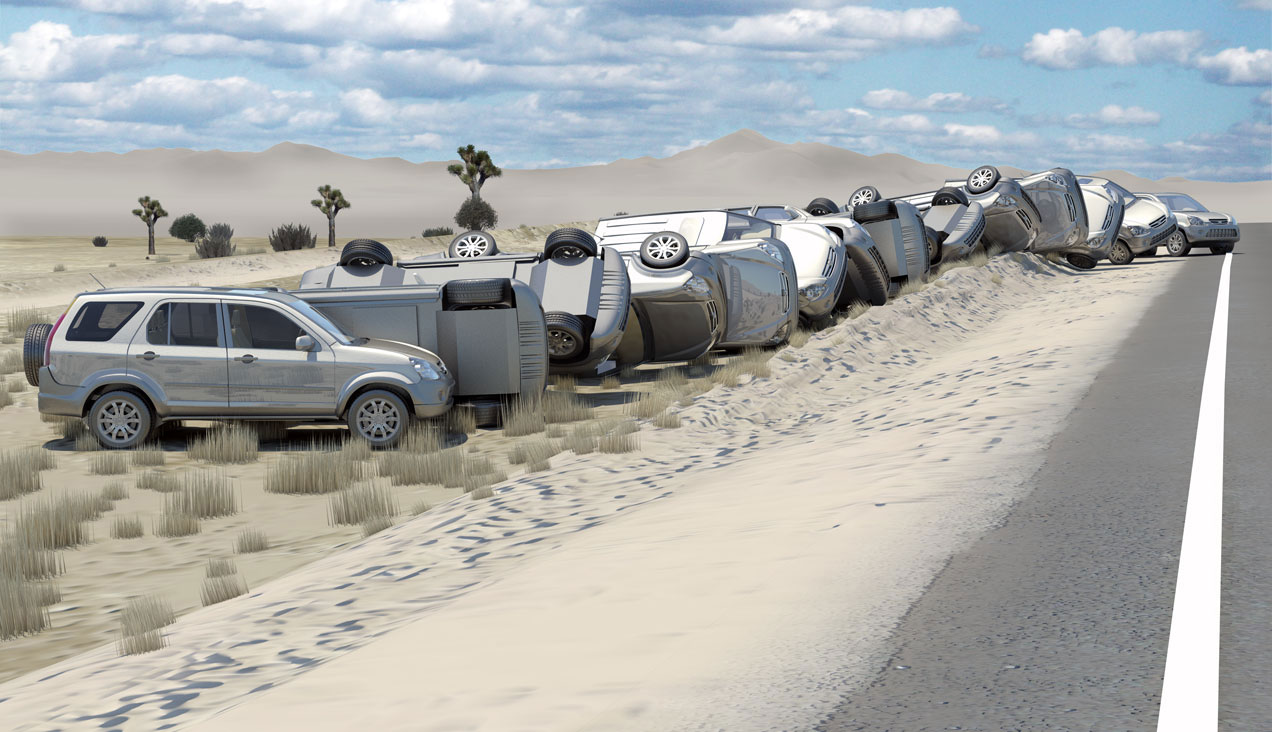Two- and Three-Dimensional Computer Modeling, Animations, and Simulations.
 When evaluating and reconstructing an accident, it is sometimes necessary or desirable to analyze vehicle and/or occupant motions in a dynamic environment. Combined with other techniques, a dynamic simulation of all or a portion of a collision sequence can permit a greater understanding and insight into various aspects of the accident. These simulations, as well as other scientific methods may then be used as the basis for an animation. An accurate animation is an extremely powerful tool that allows visualization of an event, which can be viewed from a variety of perspectives.
When evaluating and reconstructing an accident, it is sometimes necessary or desirable to analyze vehicle and/or occupant motions in a dynamic environment. Combined with other techniques, a dynamic simulation of all or a portion of a collision sequence can permit a greater understanding and insight into various aspects of the accident. These simulations, as well as other scientific methods may then be used as the basis for an animation. An accurate animation is an extremely powerful tool that allows visualization of an event, which can be viewed from a variety of perspectives.
The engineers at Collision Research and Analysis have been developing and utilizing the latest computer software for over two decades. Rooted in the Scientific Laws of Motion, as well as Energy Conservation, our engineers have developed and worked with developers for many of the available scientific programs at our disposal.
Our experts utilize highly-sophisticated state of the art scientific and graphic programs such as M-SMAC, 3DS Max, ARAS, HVE, and PC-CRASH to simulate and animate vehicle motions, collision dynamics, and basic occupant kinematics in two and three dimensions. A computer simulation/animation does not need to be reserved for those cases having long time lines and high budgets. Our engineers have the tools and experience that allow us to produce high-quality, basic simulations and animations quickly and affordably.
Animation versus Simulation
An Animation is a tool to illustrate an individual’s description of what occurred during an accident and can help to demonstrate the location of physical evidence or help to visualize the view from a witness’s perspective.
A Simulation is a computer generated sequence based on mathematical calculations and adheres to scientific laws. Validated simulation software has been accepted by the scientific community and has undergone rigorous analysis.













